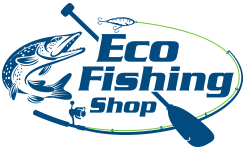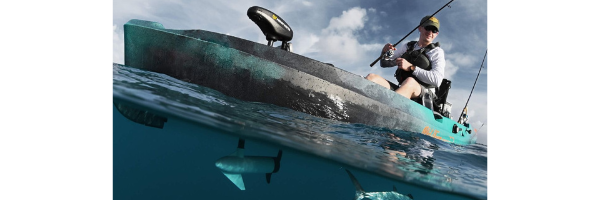Things to Consider When Searching for a Good Fishing Kayak
In our last blog, we explored whether or not a fishing kayak is worth it. If you agree with us that yes, it is, you may still have a ton of questions. Boiling it down to the most simple question possible, we can look at the basic features that make a good fishing kayak. Before we go through some specific factors that make for a good fishing kayak, here are some of our previous blogs that will be useful to you:
That is a ton of information. Almost every kayak angler started in the same place you find yourself in. The more information you absorb, the more questions you probably have. It can feel like falling down a rabbit hole with no clear path out. Information overload. The truth is that you'll probably love the choice you make no matter what. No kayak is perfect. They all have pros and cons, even the most expensive ones on the market.
Let's try and take some of that information overload phenomena out of your process by boiling fishing kayaks down to 5 important things to consider:
- Stability
- Propulsion type
- Accessory compatibility
- Maneuverability
- Comfort
Stability
Kayak stability refers to the ability of a kayak to maintain balance and resist tipping over while on the water. It is an important characteristic that determines how comfortable and safe the kayak is to use in various conditions, such as calm lakes, rivers with currents, or choppy open waters.
Kayak stability can be broadly categorized into two types: primary stability and secondary stability:
Primary Stability
Primary stability refers to the initial stability of a kayak, or how stable it feels when you are sitting in it on calm water. Kayaks with high primary stability tend to feel more stable and steady, making them suitable for beginners or those who prefer a more relaxed paddling experience. These kayaks have a wider beam (width) and a flatter hull design, which provide a larger contact area with the water, resulting in increased stability.
Secondary Stability
Secondary stability refers to the ability of a kayak to maintain stability as it leans or tilts to the side. When you lean a kayak on its edge, such as during turns or when encountering waves, the kayak's secondary stability comes into play. Kayaks with good secondary stability are designed to resist tipping over and provide a sense of security even when the kayak is tilted. These kayaks often have a narrower beam and a more rounded hull shape, allowing them to track better and provide greater maneuverability.
Refer to the hull guide above to go more in depth into the hull shapes and their stability.
Propulsion Type
Paddle, pedal, or power? Fishing kayaks come in all three types. All have their benefits and cons. There are propeller drives and fin drives and multiple motor options that either come standard with certain kayaks or can be added later to almost any kayak.
There are also some fishing kayaks that can be all three types of propulsion. If you currently don't think you need a propulsion system, or it isn't in your budget, but you may want one in the future, consider looking at fishing kayaks that can have motors or pedal drives added later (like many of the Vanhunks kayaks or the Feelfree Overdrive system for example).
Here are the propulsion types:
Pedal Drive System
Pedal drives allow anglers to propel the kayak with a pedaling system much like a bike. Pedal drives require full circular revolutions just like a bike that spin the prop. Most pedal drives allow for forward and reverse by pedaling in either direction. This can offer a big advantage when in tight spots.
Fin Drive System
Fin drives, like pedal drives, are propelled using pedals. Two fins attached to the pedal system flap sideways to propel the kayak. Fin drives only require minimal pedaling forwards and backwards, not circular revolutions like the pedal drive and can be put flush against the bottom of the hull. Fin drives are a good option for shallow water and for operators who may have limited joint mobility. Not all fin drives are capable of reverse movement.
Powered Drive System
Just like a fishing boat fitted with a trolling motor, a propeller-driven fishing kayak is fitted with a small 12-volt motor. This approach to kayak propulsion is both great for quickly covering long distances and also keeping quiet while closing in on a prime fishing spot. Powered kayaks require a battery.
Accessories & Gear Storage
Plan ahead for this question. If you are someone who likes to tinker, has lots of gear, or wants room to grow into the sport by adding as you go, then the best fishing kayak for you would be one that has multiple accessory rails and good storage space. Not all fishing kayaks are created equally in this regard. Look at the fishing kayaks and read the descriptions to gauge how much room there will be for accessories and where those accessory rails are located.
Keep your future setup in mind while thinking about your accessory needs and explore these questions:
- Is a storage hatch important to me?
- Will I want to add a motor or powered anchor and are there ready-made attachment points?
- Do I want a fish finder and how important is an included transducer mount/space?
- Would I like the potential to add another seat to make my kayak a tandem? (check out the NuCanoe kayaks.
Maneuverability
You are probably sensing a repetitive theme at this point. But every piece of information builds upon itself. Everything is tied directly to the type of water you fish on and the hull shape you think suits you best for that water. Your hull shape and the propulsion type you choose play a direct role in your ability to move around and turn.
As you've learned, a pontoon-style hull is extremely stable, but they don't track a straight line as well or turn as sharply as a v-style hull. If you are fishing bigger, calm water then turning sharply probably isn't a high priority. If you are fishing a river or open water with both current and waves then a quicker response time is needed.
Like we mentioned earlier, no kayak is a "do all" perfect kayak. Maneuverability is not universal, but it may not be as important to some as others. Imagine yourself in your favorite fishing areas and ask yourself if you'll need to turn quickly to get in and out of spots.
Comfort
Sit-on-top fishing kayaks typically provide seats with adjustable back rests. If you are planning a long day on the water, having a seat you can lean back on and stand up from will prolong your outing. Some fishing kayaks offer adjustable lumbar support (like some Hobie kayaks) and the ability to swivel 360 degrees. Even if you aren't fishing, staying comfortable makes any trip better.
Something that isn't always mentioned in regards to comfort is the ability to stand easily and stretch. Having a comfortable seat is important, but being able to stand up and stretch out is an important element to long days on a kayak. Once again, your kayak hull shape matters, but so does your seat type. If standing will be important to you, you should consider a kayak that has an elevated seat position option.
You can always add aftermarket options like the YakAttack CommandStand to help you get up and out of your seat for more comfort.
So What Makes a Good Fishing Kayak?
Don't scoff at this very general statement, but it really comes down to preference. We've laid out the different hull and propulsion types and how they contribute to your maneuverability and stability. We've talked about planning your gear preferences for future growth and not overlooking the seat and your comfort. We've written about all of these things in different forms multiple times, but they are the questions you have to ask yourself to help you find the best fishing kayak for you.
Kayaks offer a new way to fish and explore. You can reach areas otherwise unreachable on foot or by boat. You can find new "honey-holes" to fish or explore areas far away from the burdens of everyday life. No matter your experience, love for fishing (or not), or reasoning, a sit-on-top kayak is applicable to almost any scenario and any water type. Once again, you're likely going to love almost any choice you make. You'll find a way to modify it to fit your needs as they change or grow.
If you're still unsure if it is worth it, just look at the passion amongst fishing kayak owners in our online community, Kayak Anglers Resource.

Ask Questions & Use Your Available Resources
If you find yourself overwhelmed or still unsure which kayak or accessories are right for you, check out some of our additional resources. A great place to start is by joining our public community, The Kayak Anglers Resource, where you can ask questions of members who have real experience. Or, check out our YouTube channels for reviews and how-tos: Eco Fishing Shop and Kayak Anglers Resource.
Learn from other kayak anglers who were in your shoes and asking some of the same questions. Here are some of their discussions you may find useful to jump in on:
Browse all of our blogs and Buyer's Guides to most of our brands below. To check out our full range of the best fishing kayaks and accessories we have to offer, available to you via free and fast shipping, click HERE. We are happy to help and answer any questions. Click the chat button, give us a call or ask your questions in the public community, we will be there to answer no matter how you communicate!









